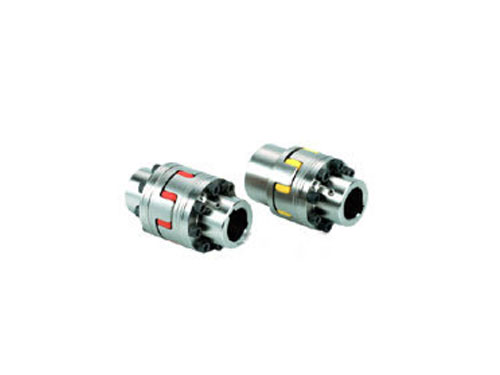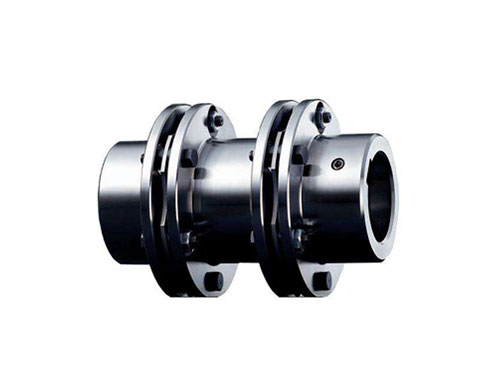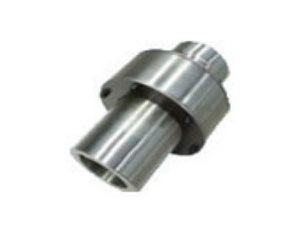 LMS type double flange type plum blossom elastic couplingLMS (formerly MLS) type-double-flange...
LMS type double flange type plum blossom elastic couplingLMS (formerly MLS) type-double-flange... TB type HG5-251-69 standard rackThe standard frame of TB type HG5-251-69 is "glass-lined...
TB type HG5-251-69 standard rackThe standard frame of TB type HG5-251-69 is "glass-lined... JMⅡJ Type Intermediate Shaft Type Diaphragm CouplingJMⅡJ Type Intermediate Shaft Type Diaphragm Coupling...
JMⅡJ Type Intermediate Shaft Type Diaphragm CouplingJMⅡJ Type Intermediate Shaft Type Diaphragm Coupling... ZL type elastic pin gear couplingZL type elastic pin gear coupling is the use of...
ZL type elastic pin gear couplingZL type elastic pin gear coupling is the use of... FCL type elastic sleeve pin couplingThe characteristics of FCL type elastic sleeve pin coupling...
FCL type elastic sleeve pin couplingThe characteristics of FCL type elastic sleeve pin coupling...Analysis on the buffering and vibration-absorbing effects of DJM type diaphragm coupling
Due to the elastic element of the DJM diaphragm coupling, the elastic element can produce greater elastic deformation and damping. Therefore, the DJM diaphragm coupling can not only compensate for the relative displacement of the two shafts, but also cause buffering and vibration absorption. effect.
In the process of mechanical transmission, the load transmitted by the transmission shaft system often changes. The reasons for the load change are different, such as unstable motor speed, unstable load of working machine and centrifugal force caused by unbalanced rotating parts in the shaft system. Dynamic loads may cause changes in load.Load changes are often reflected in periodic loads, impact loads and irregularly changing loads. DJM type diaphragm couplings can adapt to load fluctuations and have the ability to buffer and dampen vibration. They are mainly combined with DJM type diaphragm couplings. The stiffness is related to damping.
The rigidity of DJM diaphragm coupling includes radial rigidity, axial rigidity and torsional rigidity.In actual engineering, the load change is often caused by torsional vibration due to torque fluctuations, so the main stiffness of the DJM diaphragm coupling is the torsional stiffness.In general, in shafting transmission, the stiffness of other parts of the system will be much larger than that of the DJM diaphragm coupling. Therefore, in the simplified case, assuming that the elasticity of other parts is zero, only consider The elasticity of DJM type diaphragm coupling.The torsional stiffness of the DJM diaphragm coupling is used as the torsional stiffness of the drive shaft system.
Although DJM type diaphragm couplings generally have buffering and vibration absorption functions, DJM type diaphragm couplings with a certain value of stiffness can not produce vibration reduction effects under the action of any variable torque, and sometimes they will Causes intense vibration.Therefore, only when the stiffness of the DJM diaphragm coupling is coordinated with the other parameters and loads of the entire drive shaft system can the effect of vibration reduction be produced.For a certain drive shaft system, the moment of inertia and natural frequency can be obtained. If you know the changing law of the transmitted torque, such as amplitude and frequency, you can establish the differential equation of the torsional vibration of the shaft system and solve the equation , You can get the required stiffness of the DJM diaphragm coupling.In order to facilitate the solution of the differential equations of motion, it is necessary to simplify the mechanical models of the moment of inertia and stiffness of the driving and driven sides of the DJM diaphragm coupling in the transmission shaft system.It is usually simplified to two equivalent discs, which are arranged on both sides of the DJM diaphragm coupling. In DJM type diaphragm coupling, the periodic load is a typical load form in mechanical transmission.In order to avoid resonance, the changing frequency of the periodic load and the natural frequency of the drive shaft should be staggered.The method is to change the change frequency of the periodic load or change the change frequency of the shaft system.Because the change frequency of the load is related to the speed of the spindle, and the speed is a mechanical performance parameter, generally it cannot be changed at will.Therefore, the purpose of not resonating is generally achieved by changing the natural frequency of the shafting system, and changing the natural frequency of the shafting system generally changes the moment of inertia or stiffness of the shafting system. The moment of inertia is related to the mechanical structure, and it is difficult to achieve by changing the moment of inertia. , And the stiffness of the shaft system is easy to change.Therefore, changing the star-shaped DJM diaphragm coupling is to change the stiffness of the shaft system to achieve the purpose of avoiding resonance.